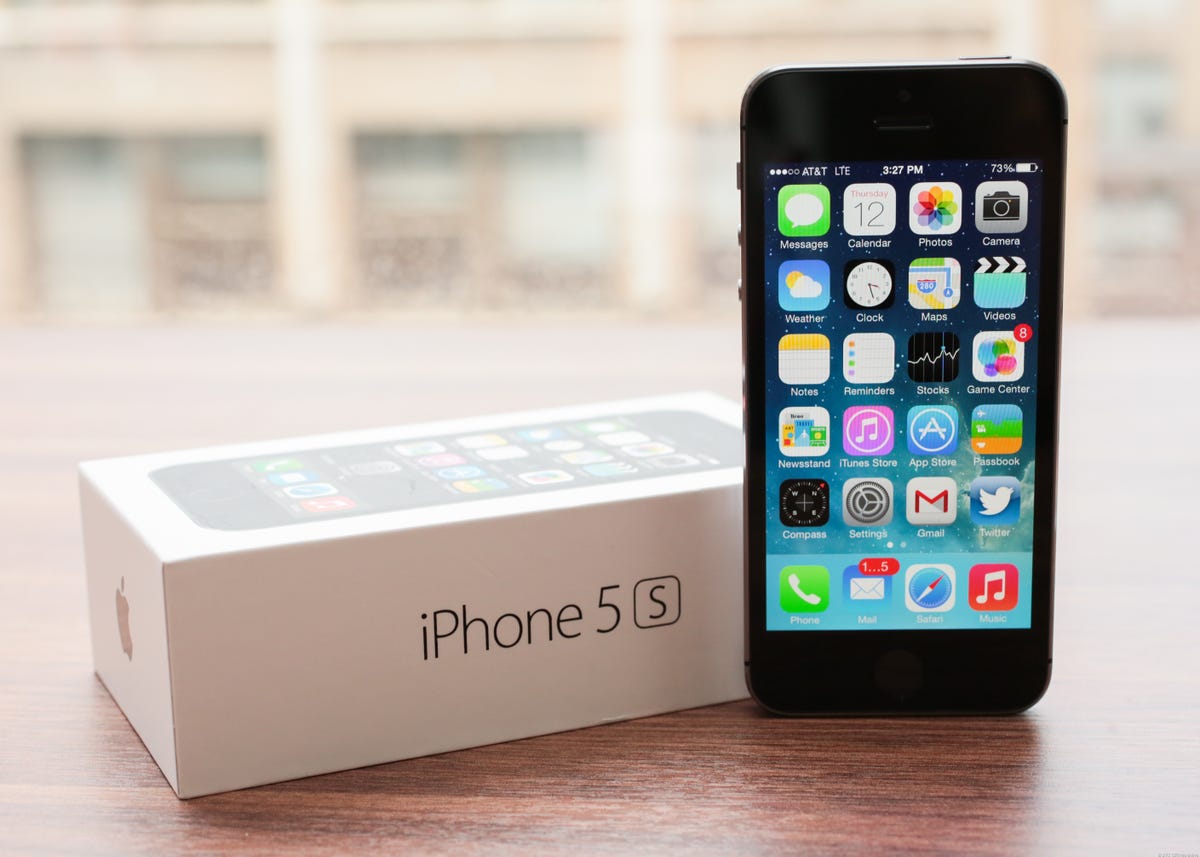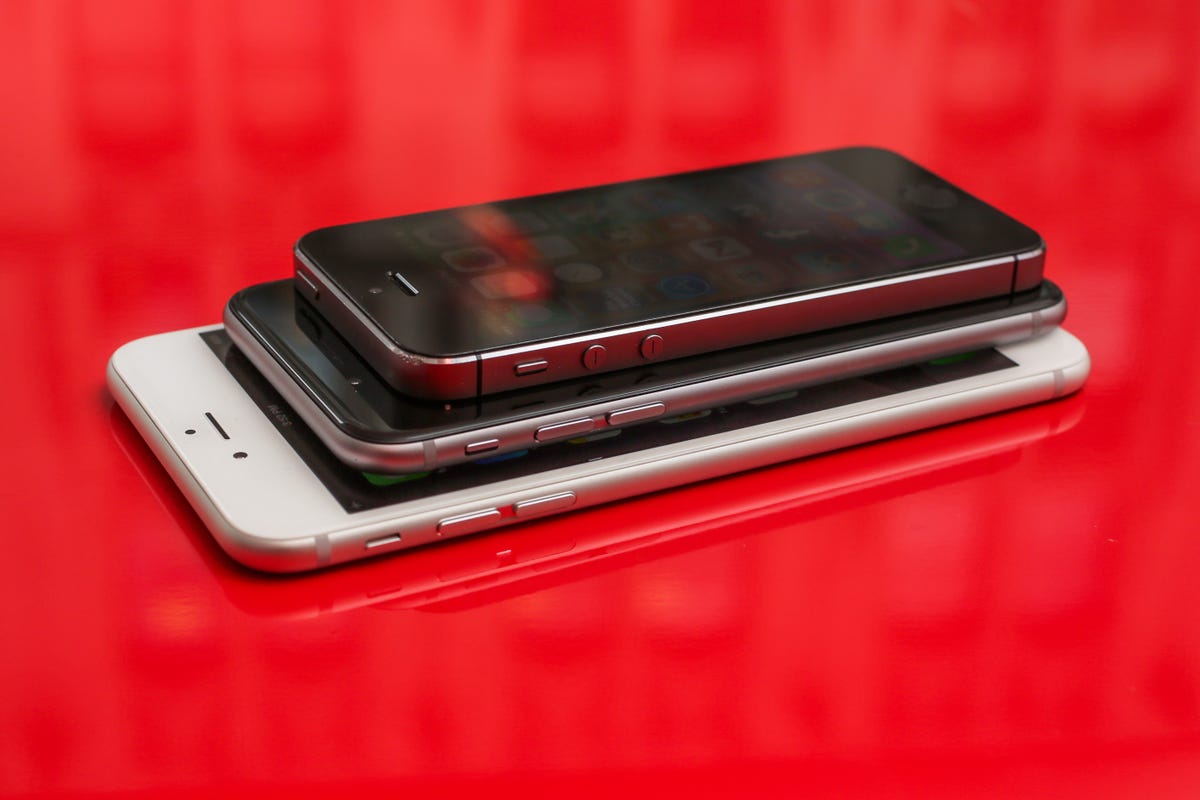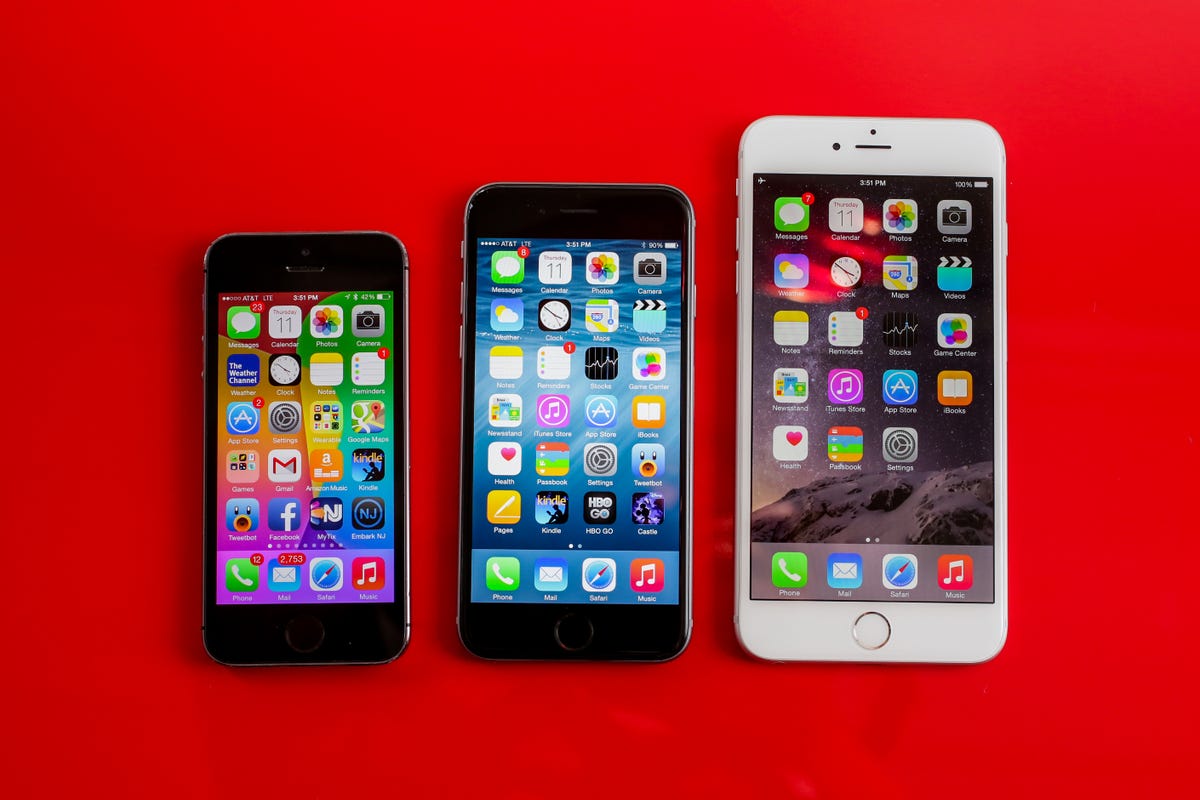This year, you might do something you’ve never even considered before. You might buy a smartphone that’s two years old. That’s because the Apple iPhone 5S , released in 2013, could hit the sweet spot between price and capability for those considering their next smartphone purchase. Let me explain why you might pick the iPhone 5S over anything else.
It’s small
If you haven’t paid close attention to the smartphone market, you might not be aware: The iPhone 5S is one of the last good small phones you can buy in the United States. One of the very few that make sense for small hands. Or easily fit in a tiny purse or clutch. Or use on a moving bus or train with your free hand.

Sarah Tew/CNET
Over the past couple years, pretty much every company producing smartphones decided that big, beautiful and thin was the way to go; stretching screen sizes to 5, 6, even 7 inches to stay ahead of the pack. Even Apple wasn’t immune: The newer iPhone 6 and 6S have 4.7-inch screens, compared to the 4-inch screens of their most recent predecessors. These days, an Android phone with a 5-inch screen is considered small. But the iPhone 5S has a 4-inch screen and outer dimensions that make it feel tiny — or, if you’re coming from a small phone circa 2013, make everything else feel unspeakably large.

 Enlarge Image
Enlarge ImageSarah Tew / CNET
Where did all the small phones go? Here’s the short version: Apple and Samsung were eating up so much of the phone industry’s profits that other companies felt forced to adapt. They saw that Samsung was successfully gaining market share by building devices with big, beautiful screens , and decided to do the same. And they focused their efforts on fewer phones in order to meaningfully compete on quality.
That meant niche markets like “people with small hands” and “people who prefer hardware keyboards” were ignored in favor of the push towards huge handsets. There were exceptions: Sony made an awesome small Android phone called the Xperia Z3 Compact , but couldn’t get support from carriers and retailers in the United States.
A phone on the cheap — or for free
The iPhone 5S is also cheap. Cheap at a time when cheap phones are becoming a very desirable thing.
Remember when you could get a phone for just $200, or $100, or free — so long as you signed a two-year contract? Those days are nearly done. Three of the four major US cellular carriers — Verizon, T-Mobile and Sprint — have decided to do away with two-year contracts and smartphone subsidies. Now, most phone buyers will have to pay full price out of their own pocket. Prices start around $650 for a new high-end phone like the iPhone 6S. Sounds like a lot of money, no? Well, you could pay with an installment plan and tack on $27 a month to your phone bill, but you’ll still owe the full $650 over time.
In that climate, a lot of folks are going to be looking for cheaper devices — like the $450 iPhone 5S. Or maybe the $400 Moto X Pure Edition , the $330 OnePlus 2 or the $380 Nexus 5X .
And if that still sounds like too much money, consider that you can still get the iPhone 5S for free on a two-year contract. AT&T currently still offers the 2-year-old iPhone 5S, the Samsung Galaxy S5 and Galaxy Note 4 and the LG G3 that way. Sprint still offers the iPhone 5S, HTC One M8 and LG G Flex 2 for free on contract as well.
Of course, none of those other phones are small. But the bigger difference, as you’re about to read, is that the iPhone is made by Apple.
The Apple advantage
For the sake of argument, let’s say you’re sold on the idea of a cheap phone, a small phone, or both. Isn’t the iPhone 5S still too old? Wouldn’t someone be better off with a Galaxy S5 from last year?
Not necessarily. Unlike Android phones — which generally depend on a complex relationship between phone makers, cellular carriers and Google to stay relevant and get the latest software updates — the iPhone only depends on Apple. Go ahead and search Google for “Galaxy S5 Lollipop,” and you’ll see just how long it can take for last year’s top Android handset to get new features and how many nasty issues can pop up.
Meanwhile, the iPhone 5S was running iOS 9, the latest operating system from Apple , on the very same day it came to every other iPhone. In fact, Apple brought the iOS 9 update to the earlier iPhone 5 and iPhone 4S as well…which is a pretty good omen for folks who might buy a new iPhone 5S for the first time and hope to get similar software updates down the road.

 Enlarge Image
Enlarge ImageSarah Tew/CNET
The iPhone 5S hardware is also surprisingly not that out of date — because the 5S was the phone that quietly set the bar for most every device that came after.
It introduced the Touch ID fingerprint sensor, the M7 motion co-processor that lets it track your fitness and save battery life, and most importantly a vastly improved camera that let in more light, recorded 120fps slow-motion video and added a burst mode. Android smartphone cameras are just now managing to surpass the photo quality, video quality and ease of use which iPhone owners were enjoying two years ago.
And while you can’t use that fingerprint sensor with Apple Pay to buy your next cup of joe — the iPhone 5S is missing a key security feature that lets it work — you can pair it with an Apple Watch to add that functionality.
Though the Apple A7 chip is definitely a couple generations behind the latest and greatest mobile processors, that shouldn’t scare you off the way it might with an Android phone. The A7 is still part of a continuum of Apple chips that app developers can’t afford to ignore. For instance, the new Apple TV actually only has an A8 processor, not the latest A9, and it was only the most recent iPhone 6S and 6S Plus that finally saw Apple devices graduate to 2GB of RAM. The A7 in the iPhone 5S was also the first with 64-bit processing, so it should still be relevant if or when Apple phases out support for earlier 32-bit chips.
Bottom line: Even a year or two from now, I bet you’ll be hard-pressed to find apps that won’t run on an iPhone 5S.
And all of this is without mentioning accessories; you can find loads of old iPhone 5 and 5S cases and attachments at a steep discount these days.
I’m not an Apple fanboy, by the way. I far prefer Android and Windows for day-to-day use. But I’ve gotta admit I’d pick a 2-year-old iPhone in a heartbeat over a 2-year-old Android handset — particularly an iPhone 5S.

 Enlarge Image
Enlarge ImageSarah Tew/CNET
But is it good enough?
It’s one thing to play armchair quarterback and list off reasons why the iPhone 5S might make sense if you’re just the right kind of person. It’s another entirely to actually live with a two-year-old phone. So I found a couple of CNET staffers with the iPhone 5S running the latest iOS 9, and asked them how they felt.

 Enlarge Image
Enlarge ImageSarah Tew/CNET
Caitlin Petrakovitz, CNET’s reviews copy editor, was pretty positive. “For the first time, it made me not hate having an older phone,” she says of the update. While she doesn’t care for some of the little user interface changes in iOS 9, like the new app switcher, she saw a huge improvement in battery life that she didn’t expect at all. Now, with her AT&T upgrade eligibility right around the corner, she’s actually wondering whether it’s worth upgrading to an iPhone 6S and having to worry if it’ll fit into her handbags and clutches. She likes that the iPhone 5S is small.
But Danielle Ramirez, a senior production manager on CNET Magazine, can’t wait to move on. For one thing, she’s been complaining of random shutdown and overheating issues on her freshly upgraded iPhone, plus battery life that’s worse than ever. (We saw a few folks on Apple’s support forums with the same problems.) She also tends to buy the latest subsidized phone every two years to get a good deal on a device that will stay fresh and relevant.
When I explain that smartphone subsidies are going away, and that a new iPhone 5S would come with a fresh battery and hopefully no rebooting, she admits that it might work for some people. “It doesn’t feel out of date at all,” she says of her phone. But even though she also appreciates how the iPhone 5S is small — “I’m horrified we’re going to go back to the Zack Morris brick phone,” she half-jokes — she’d personally rather be on a newer handset.
Are you actually suggesting people buy an iPhone 5S?
No, not necessarily. Particularly not on a two-year contract, because even if the iPhone 5S feels capable today, it could be pretty out of date by 2017. If you take a close look at exactly what you can get for your money in this brave new world, spending an extra $100 here or there might make more sense. If you’re buying your new phone with a 24-month installment plan, you can afford the difference just by skipping a few lattes each month.
But the smartphone landscape has changed so significantly in the past couple of years that I could legitimately see some people buying a phone today that was released in 2013. The iPhone 5S just seems so small, inexpensive and yet positioned so well. That’s thanks in part to Apple’s foresight — the camera, the 64-bit chip, the fingerprint sensor before those were cool — and partly just because, with iOS 9, Apple is keeping those older phones useful.



